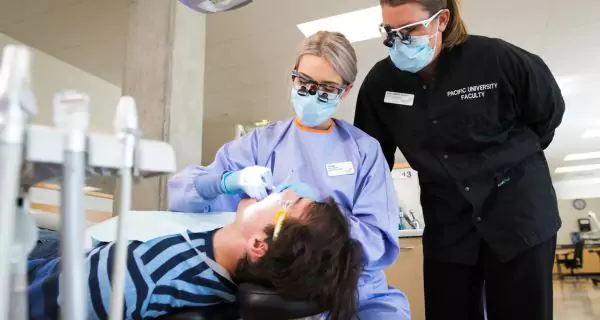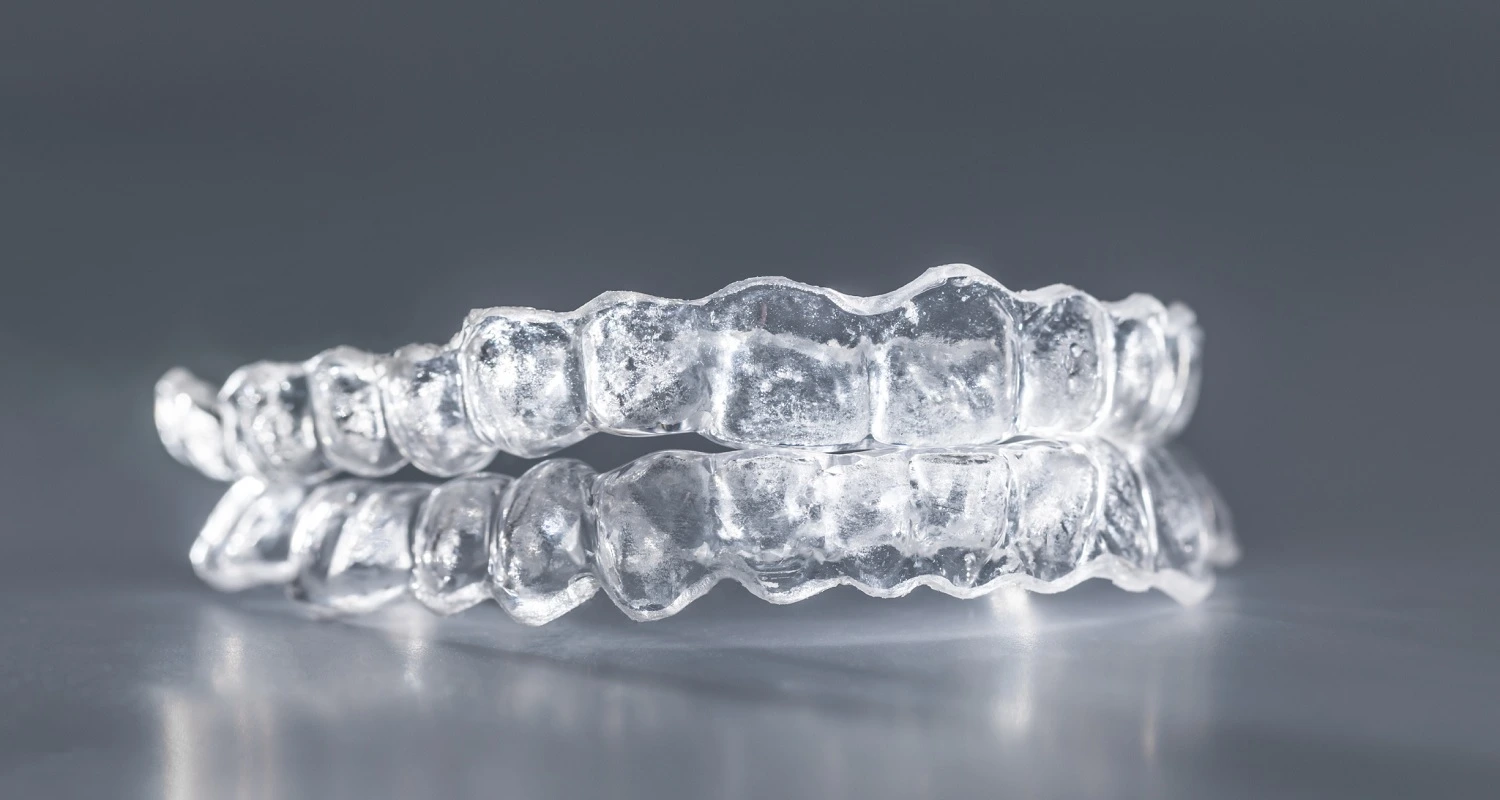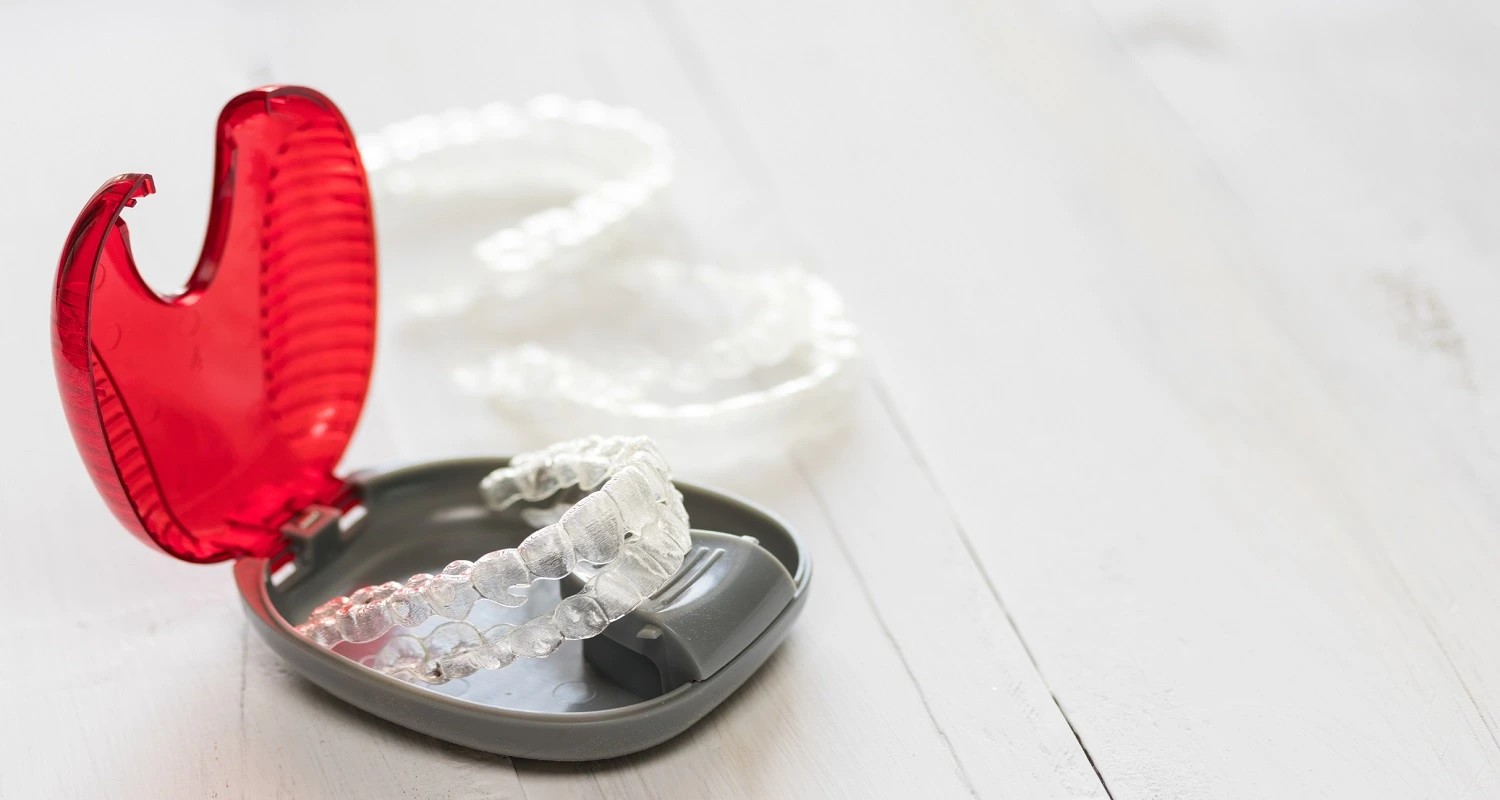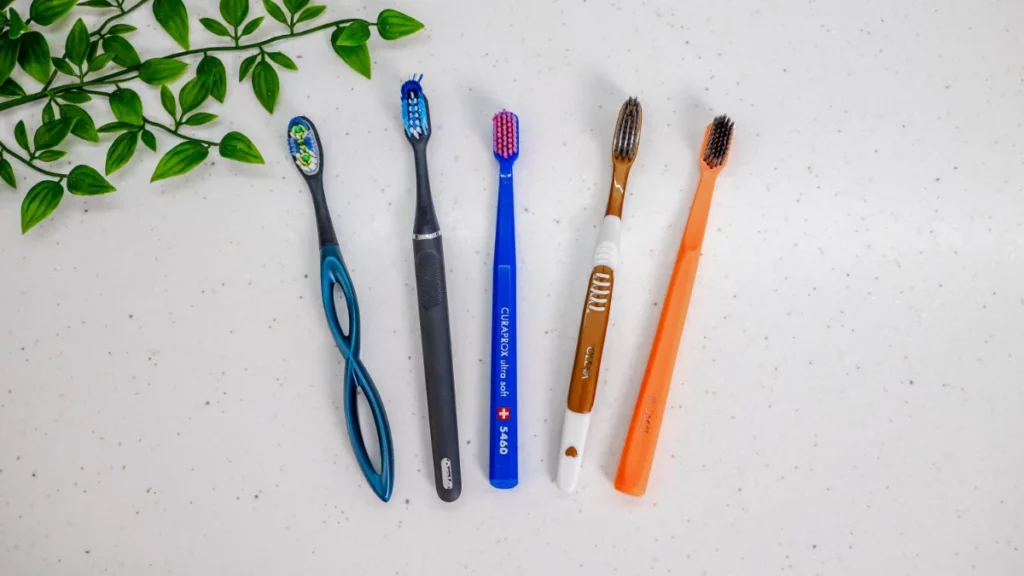Last Updated on: 19th September 2025, 12:46 pm
How does Invisalign work? These transparent aligners present a prevalent choice, allowing individuals to achieve a straighter smile discreetly. With a growing desire for beautiful smiles, the field of orthodontic treatments has witnessed remarkable progress in recent years. From conventional metal brackets to self-ligating systems, ceramic brackets, and other aesthetically pleasing options, there has been a surge in diverse approaches. Among the widely adopted alternatives today, invisible aligners have gained immense popularity.
In this article, you will find relevant information about orthodontic treatment with Invisalign aligners, how they work, and the steps involved. In short, you will find out how Invisalign can discreetly and comfortably straighten your teeth.
What is Invisalign?
Invisalign is an orthodontic treatment with aligners that helps to straighten teeth comfortably and less noticeably. Clear retainer-like plates are used, which take the shape of your teeth, using 3D imaging technology. These plates are changed every 1 or 2 weeks, according to the orthodontist’s prescription.
The question often arises whether Invisalign is as effective as conventional braces, and the resounding answer is affirmative. When comparing Ceramic vs Metal Braces, it is evident that Invisalign delivers optimal, aesthetic, and functional outcomes.
Who Can Use Invisalign?
Treatment with aligners is indicated for people who have a mild or moderate bite problems, dental crowding, and/or space problems. They can correct overbite, crossbite, and on the open bite in some patients.
The orthodontist, after making a review and requesting radiographic examinations, will determine how viable it is to use aligners to carry out the treatment; in some very severe cases, you might consider wearing conventional orthodontics at the beginning of the treatment and finalize the results with Invisalign.
How does Invisalign Work?
Like any orthodontic treatment, aligners will generate pressure on the teeth to change their position. This pressure causes the bone around the teeth to reabsorb, allowing them to move. Once in their new position, bone forms around the tooth to maintain it.
Initially, an assessment is scheduled with the orthodontic specialist to determine if Invisalign is the appropriate treatment for your case followed by a series of tests including X-rays, cephalometric studies, and study models.
If the patient is eligible for treatment with aligners, the subsequent steps are:
1. Create a custom work plan
Each case is different, so each approach with aligners will be as well. The first thing to do is an intraoral scan, which sends information to special software that allows the dentist to see your mouth in a 3D model from different angles. It helps plan the movements of the teeth and how their position will change over time. In this way, dental movements are programmed sequentially. This information is sent to a laboratory that will make the aligners, following the specifications of the software.
2. Delivery of Invisalign aligners
When the aligners are ready, an appointment is scheduled for installation. Your orthodontist will give you a box with the complete set of plates is given – marked by week or in consecutive order to avoid confusion. Your dentist will explain how to place and remove the aligners and the care that must be taken. Additionally, he will indicate how often you should change the plates following the prescribed series. They are generally changed every 1 or 2 weeks.
3. Attend control appointments
After installing the aligners, your orthodontist will schedule appointments, usually every 6 to 10 weeks, to assess how the treatment is going and to ensure that tooth movement is under control. He will also review whether any modifications to the treatment plan are necessary.
The aligners can be removed and put on with ease: the results depend largely upon the patient’s consistency with the treatment. You should wear the plates 20 to 22 hours a day and only take them off to eat.
The duration of treatment with aligners will depend upon the severity of each case, normally it lasts between 12 and 18 months.
Benefits of Orthodontic Treatment with Invisalign
• Ease of cleaning teeth: Unlike braces, aligners can be removed for oral hygiene; you can brush and floss without any problem so your teeth and gums will stay clean and healthy.
• There is no food restriction: With traditional orthodontics, it is not possible to eat any type of food since the brackets can fall off or the wires can break. Since the aligners are removed to eat, the patient can continue to eat what they usually consume without restrictions.
• Aesthetics: Being transparent, the aligners are practically invisible and much less noticeable than traditional braces.
• They can be removed: Although the recommendation is to keep the aligners in the mouth for as long as possible, it is good to know that you can remove them for photos, sporting events, or any special occasion to show off your natural teeth.
• Patient comfort
What are the disadvantages of invisalign?
1. You will likely feel pain when removing the aligner from your mouth, so hard foods may be difficult to eat.
2. Consistency is crucial for treatment with Invisalign; to achieve results, you have to use it between 20 and 22 hours a day.
3. Invisalign is more expensive than conventional orthodontic treatment; the average cost is between $5,000 and $6,000.
4. The plates can be easily stained with dark foods, tea, and soft drinks; it is recommended to only consume water when using them.
5. In some cases, attachments that stick to the teeth may be required to make the desired movements, which is often uncomfortable.
6. They can be lost or damaged if you are not careful.
Care and Maintenance of Invisalign Aligners
The following recommendations will be of great help to keep the aligners clean and your mouth in good health:
1. Wash the aligners with hand soap and water before putting them on; never clean them with a toothbrush since they can be scratched and lose their shine.
2. Don’t add mouthwash because it can stain them.
3. Avoid eating with the aligners on.
4. Avoid smoking.
5. Store aligners in a cool, dry place.
6. Keep aligners away from the children and pets that may harm them.
7. When removing the aligners, always store them in the box.
Invisalign is a very good orthodontic option. Check with your dentist or orthodontist if you are a candidate. The benefits compared to conventional orthodontics are many, and yes, your level of commitment must be higher to avoid the temptation to remove them. But if you are judicious, you will be able to enjoy a healthy treatment and obtain optimal results.
Frequently Asked Questions
What is the rate at which teeth move with Invisalign?
Typically, it takes around 6 to 12 months for your teeth to reach the desired position with Invisalign. However, many individuals start observing noticeable changes within the initial two months after receiving their set of aligner trays. It is important to note that these time frames represent average experiences.
What is the timeframe for Invisalign to take effect?
Typically, adults complete their Invisalign treatment and achieve straight smiles within a span of 12-18 months. In certain instances, noticeable results can become apparent within a few weeks of commencing the Invisalign process. To ensure effective treatment, it is recommended to wear the aligners for 20-22 hours per day and receive a new set every week or two.
What is the level of discomfort associated with Invisalign?
In general, Invisalign tends to be less painful compared to traditional methods of teeth straightening. Most individuals typically experience only mild discomfort or a slight pressure sensation when wearing their aligners. However, if you happen to encounter any Invisalign-related pain, there are several measures you can take to mitigate it.
Is it necessary to wear Invisalign while sleeping?
The straightforward answer is, yes! For optimal results, it is important to wear your Invisalign while sleeping. You should aim to wear your Invisalign aligners for 22 hours per day. Considering there are only 24 hours in a day, it is crucial to allow them to work their magic while you are asleep.
Share:
References
1. Dorwart, L. (2022).Invisalign vs. Braces: Which Is the Better Option? Verywell Health. https://www.verywellhealth.com/invisalign-vs-braces-5218916
2. Khorsandi, J., DDS. (2023). How Do Aligners Work to Straighten Teeth? Byte. https://www.byte.com/community/resources/article/how-aligners-work-straighten-teeth/
3. Kravitz, N. D., Kusnoto, B., BeGole, E. A., Obrez, A., & Agran, B. (2008).How well does Invisalign work? A prospective clinical study evaluating the efficacy of tooth movement with Invisalign. American Journal of Orthodontics and Dentofacial Orthopedics, 135(1), 27–35. https://doi.org/10.1016/j.ajodo.2007.05.018
4. Larson, J. (January 7, 2021). What to Know About Invisalign and Its Effectiveness. Healthline. https://www.healthline.com/health/does-invisalign-work
5. Marta, S. (Reviewed: March 23, 2023). Invisible Orthodontic Aligners. WebMD. https://www.webmd.com/oral-health/invisible-orthodontic-aligners
6. Shashidhar, K., Kanwal, B., Kuttappa, M., Nayak, U. K., Shetty, A., & Mathew, K. (2021).Clear Aligners: Where are we today? A narrative review. Journal of International Oral Health: JIOH, 14(3), 222. https://journals.lww.com/jioh/fulltext/2022/14030/clear_aligners__where_are_we_today__a_narrative.3.aspx
7. Sherk, H. (Reviewed: September 13, 2021). Does Invisalign Really Work? Everyday Health https://www.everydayhealth.com/dental-health/does-invisalign-really-work/
8. Tamer, I., Öztaş, E., & Marşan, G. (2019).Orthodontic Treatment with Clear Aligners and The Scientific Reality Behind Their Marketing: A Literature Review. Turkish Journal of Orthodontics, 32(4), 241–246. https://doi.org/10.5152/turkjorthod.2019.18083
-
Nayibe Cubillos M. [Author]
Pharmaceutical Chemestry |Pharmaceutical Process Management | Pharmaceutical Care | Pharmaceutical Services Audit | Pharmaceutical Services Process Consulting | Content Project Manager | SEO Knowledge | Content Writer | Leadership | Scrum Master
View all posts
A healthcare writer with a solid background in pharmaceutical chemistry and a thorough understanding of Colombian regulatory processes and comprehensive sector management, she has significant experience coordinating and leading multidisciplina...




















